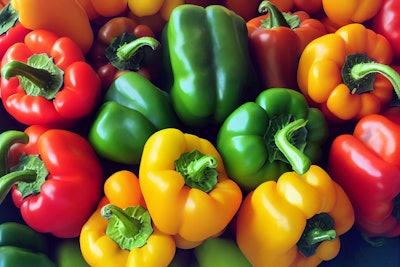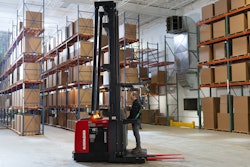
Peppers. How many people would think that peppers of all things could cause so much trouble? In the world of agriculture and food processing, peppers play a crucial role beyond just adding flavor to meals. The majority of peppers cultivated worldwide are processed further into a variety of products and not just for consumer consumption. These include sauces, salsas, spice blends, canned goods, and an array of food products where peppers are a key ingredient. This vital role in food processing means that any interruption in the supply of peppers can have significant ripple effects across the food industry from consumer sales, food manufacturing and food service.
Currently, the world is facing a severe shortage of peppers, impacting not only consumer purchases but also foodservice operations and downstream manufacturing needs. This shortage is causing substantial disruptions across the supply chain and food manufacturing sectors.
Here’s how the current global pepper shortage impacts various sectors, and the importance of having robust supply chain processes and systems to manage such disruptions effectively.
The impact of the pepper shortage on various sectors
- Consumer purchases. The first noticeable impact of the pepper shortage is on consumer purchases. Shoppers are finding it increasingly difficult to find fresh peppers in grocery stores. When available, the prices have surged, reflecting the scarcity. This price hike is due to the basic economic principle of supply and demand. As the supply diminishes, the prices naturally rise, making peppers less accessible to the average consumer. This scarcity affects not only fresh produce sections but also the availability and cost of processed goods containing peppers, such as jarred salsa, hot sauce and even frozen meals.
- Foodservice operations. Restaurants and foodservice providers are also feeling the pinch. Many dishes, particularly in cuisines such as Mexican, Italian, and Asian, rely heavily on peppers for their distinctive flavors. The shortage means that restaurants either have to source peppers at a higher cost, pass these costs onto consumers, or modify their menus to reduce reliance on peppers. This situation is particularly challenging for smaller establishments with tighter profit margins, which may struggle to absorb the increased costs or risk losing customers due to price hikes.
- Downstream manufacturing. The impact extends further to food manufacturers who rely on a steady supply of peppers to produce their goods. For example, manufacturers of hot sauces, spices, and pre-packaged meals are finding it difficult to maintain production levels. Some companies are experiencing delays and increased production costs as they search for alternative suppliers or substitute ingredients. This disruption can lead to empty shelves in stores and decreased product availability, impacting both retailers and consumers.
The importance of robust supply chain systems and processes
The pepper shortage underscores the critical importance of having robust supply chain processes and systems. Effective supply chain management can mitigate the impact of such disruptions and ensure a more resilient food ecosystem. Here are several key strategies:
- Diversified sourcing. One of the fundamental principles of a resilient supply chain is diversified sourcing. Companies that rely on multiple suppliers from different geographical locations are less vulnerable to regional disruptions. For instance, if a drought or disease impacts pepper production in one country, a diversified supply chain can tap into suppliers from unaffected regions, ensuring a continuous flow of raw materials.
- Advanced forecasting and inventory management. Utilizing advanced forecasting tools and inventory management systems can help predict potential shortages and adjust procurement strategies accordingly. Predictive analytics, which uses historical data and market trends, can provide early warnings of supply chain disruptions. This allows businesses to build buffer stocks or secure alternative sources before the situation becomes critical.
- Supplier relationships and collaboration. Building strong relationships with suppliers is crucial. Collaborative relationships can lead to better communication and more flexible arrangements in times of crisis. Suppliers are more likely to prioritize businesses with whom they have established trust and long-term partnerships. Joint planning and risk management strategies can also be developed to address potential supply chain issues proactively.
- Supply chain transparency. Transparency across the supply chain is vital. This involves having visibility into every step of the supply chain, from the farm to the consumer. Technologies such as blockchain can enhance transparency by providing real-time data on the movement and status of goods. This information can be shared across the business ecosystem, allowing all stakeholders to make informed decisions quickly.
- Agility and flexibility. Agility in the supply chain allows businesses to adapt quickly to changes. This includes the ability to switch suppliers, adjust production schedules, or alter transportation routes as needed. Flexibility can be achieved through strategies such as maintaining strategic reserves of critical ingredients or investing in scalable production capabilities.
- Technological integration. Integrating modern technologies such as the Internet of Things (IoT), artificial intelligence (AI), and machine learning (ML) into supply chain management can enhance efficiency and responsiveness. IoT devices can provide real-time monitoring of agricultural conditions, while AI and ML can optimize logistics and predict potential supply chain disruptions.
Conclusion
The global pepper shortage serves as a stark reminder of the vulnerabilities inherent in our food supply chains. As peppers are a critical ingredient in a wide range of processed foods, the current shortage has far-reaching implications for consumers, food service providers, and manufacturers. Addressing this challenge requires a comprehensive approach that includes diversified sourcing, advanced forecasting, strong supplier relationships, supply chain transparency, agility, and technological integration.
By implementing robust supply chain processes and systems, businesses can better navigate the complexities of global agriculture and minimize the impact of disruptions. Ensuring a resilient supply chain not only helps manage current crises but also prepares the industry for future challenges, ultimately safeguarding the continuous availability of essential food products for consumers worldwide.




















